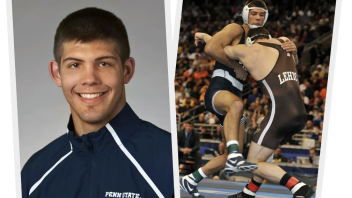Unite and Conquer
From our July/August 2017 issue: It took two years to convince the skeptics—and those were just the guys on his roster. For fans, media, and even some Nittany Lion lettermen, it took last season’s inspiring Big Ten title run to convince them that James Franklin was the right man to lead Penn State football. His secret? Preaching family, recruiting serious talent, and maybe even learning a thing or two along the way.



